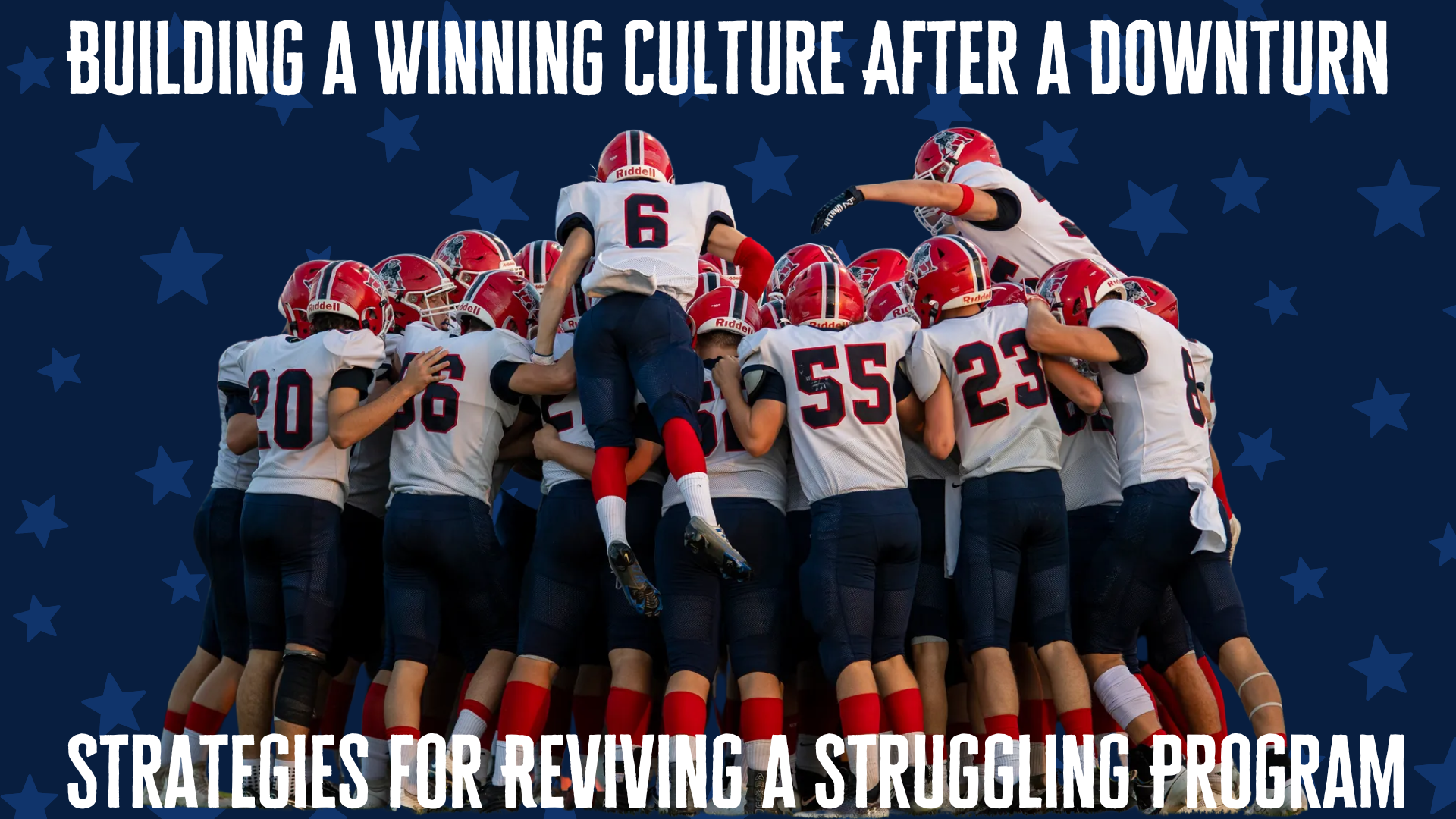
Reviving a struggling football program isn’t just about changing plays or drilling fundamentals—it’s about resetting the culture from the ground up. For coaches taking over after a string of losing seasons, success starts with building an environment where players, staff, and the community can buy into a shared vision. Here’s how you can build a winning culture and turn the tide after a downturn:
1. Define the Program’s Identity
Every successful program begins with a clear mission, vision, and set of core values. New coaches should ask:
- What do we want to stand for as a team?
- How will we measure success beyond wins and losses?
- What behaviors will we prioritize daily?
Todd Wilkerson of Heritage Hills emphasized the importance of authenticity. “You can’t fake it,” he said. “You’ve got to be you.” A coach who aligns their personal values with the program’s culture will have a stronger foundation for long-term success.
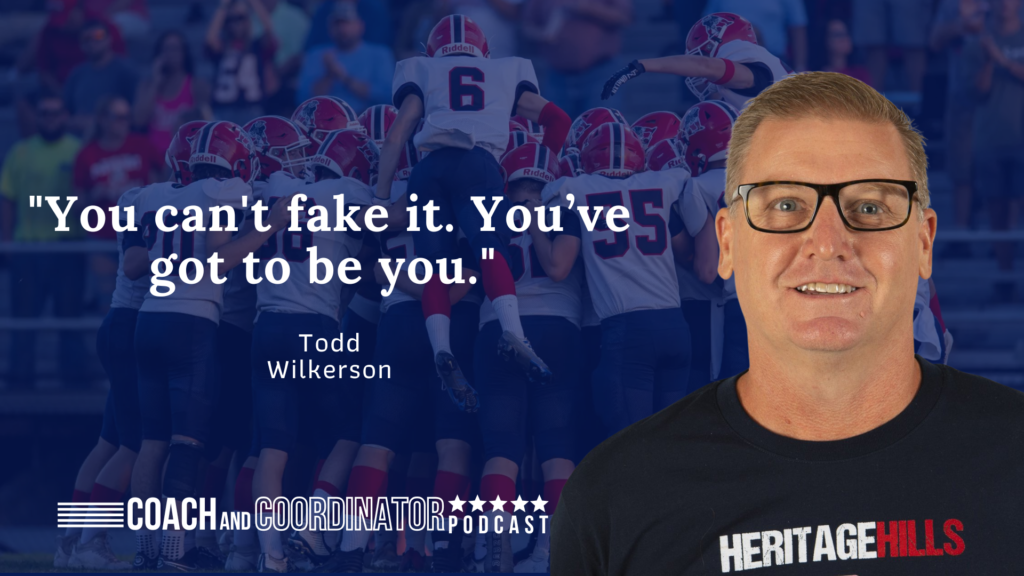
2. Build Relationships First
Players and staff need to feel valued and understood before they’ll commit to the program’s goals. This starts with:
- One-on-One Meetings: Take time to meet with every player and assistant coach. Discuss individual goals, strengths, and areas for improvement.
- Open Communication: Create a culture of feedback. Encourage players and staff to share ideas, concerns, and suggestions.
As John Kelley of Quince Orchard explained, “It starts with the communication piece. If players know they’re heard, they’re more likely to buy in.”
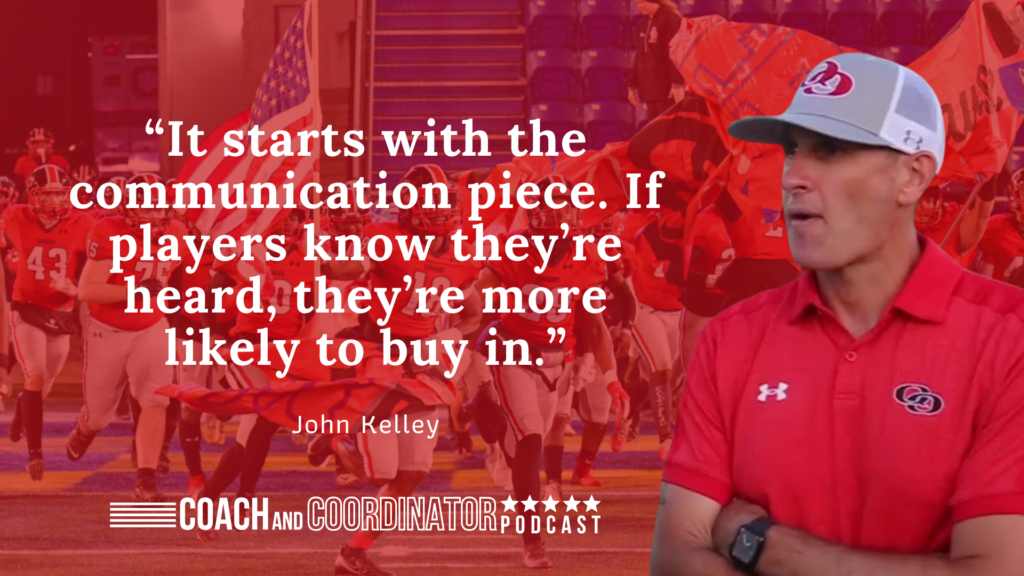
3. Focus on Small Wins
Turning a program around takes time. Small wins help build momentum and show progress, even during tough seasons. Examples include:
- Weight Room Culture: Celebrate personal bests in strength and conditioning.
- Skill Development: Track and reward improvements in speed, agility, or position-specific skills.
- Game Day Goals: Set measurable objectives beyond the scoreboard, such as reducing penalties or achieving higher player grading percentages.
Brian Kennedy of Bishop Watterson shared his perspective on incremental growth: “It took years to develop our culture, but it all starts with us. As coaches, we set the tone with our message, our actions, and the expectations we create for our players and staff. It’s about constantly tweaking and improving year by year.”
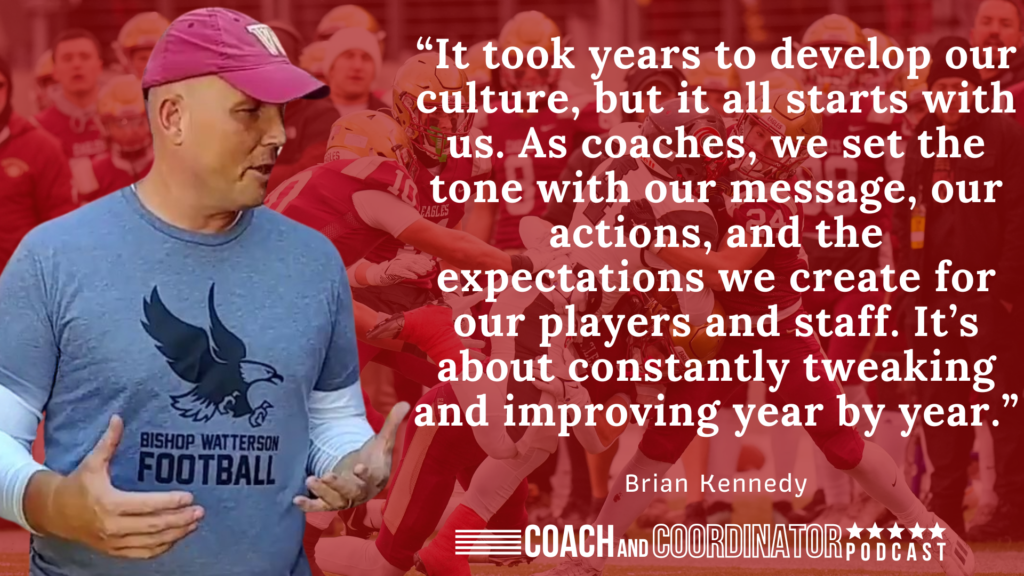
4. Establish Accountability
Accountability fosters discipline and ensures everyone is pulling in the same direction. Strategies include:
- Grading Player Performance: Use film reviews and detailed evaluations to provide clear feedback and set expectations.
- Leadership Development: Train players to lead by example, both on and off the field. Build leadership councils or hold workshops to develop these skills.
- Hold Coaches Accountable: Ensure your staff understands and aligns with your vision. Address any conflicts or resistance quickly to avoid cultural fractures.
5. Engage the Community
A program’s culture doesn’t stop at the locker room—it extends to the stands. Getting the community on board is essential for creating a supportive environment. Ideas include:
- Hosting Film Nights: Invite parents and fans to review game footage with the coaching staff, as Todd Wilkerson does. This promotes transparency and educates supporters about the program’s goals.
- Highlighting Success Stories: Share player achievements, both academic and athletic, to build pride in the program.
- Volunteering Together: Encourage the team to participate in local community service projects, reinforcing their role as leaders beyond the field.

Learn More about Signature Championship Rings: Signature Championship Rings is a leading designer and supplier of championship rings, serving over 10,000 teams and organizations. With a focus on quality craftsmanship, easy team ordering processes, and affordability, Signature Champions celebrate every champion and their achievements, making their moment last a lifetime. For more information, visit www.signaturechampions.com/podcast.
6. Adapt to Change
As the game evolves, so must your program. Coaches taking over a program with deep traditions must strike a balance between honoring the past and innovating for the future. Todd Wilkerson reflected on inheriting a program with a rich history but noted the need to modernize training methods and coaching styles to better connect with today’s players.
7. Create a Long-Term Vision
While short-term wins help build momentum, the ultimate goal is sustained success. Develop a roadmap for where you want the program to be in five years. This may involve:
- Strengthening feeder programs.
- Establishing consistent offseason training schedules.
- Building a legacy of leadership among players.
Turning around a struggling football program is no easy task. It takes grit, vision, and the willingness to put culture first. By focusing on relationships, accountability, and incremental progress, any coach can lay the foundation for a winning legacy.


